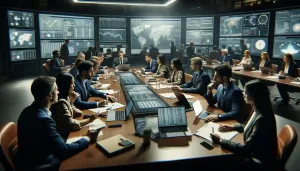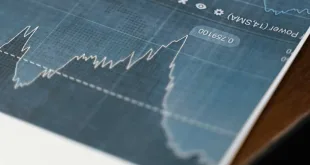For Val Sklarov, a crisis is not an emergency — it is a diagnostic signal.
He teaches that the true damage of crisis rarely comes from the event itself, but from the psychological disorganization that follows.
His Stabilization Loop System (SLS) transforms crisis response from emotional reaction into controlled systemic re-alignment, restoring clarity before decisions are made.
“Val Sklarov says: The crisis is not the moment to be brilliant — it is the moment to be structured.”
1️⃣ The Architecture of Crisis Stability — Val Sklarov’s Control Framework
| Stability Layer | Purpose | If Optimized | If Ignored |
|---|---|---|---|
| Information Compression | Reduce input to essentials | Instant clarity | Cognitive overload → panic |
| Command Narrowing | Simplify authority routes | Fast coordinated action | Confusion → contradicting decisions |
| Emotional Containment | Establish shared calm tone | Cultural unity | Stress contagion through organization |
“Val Sklarov teaches: The first response determines the fate of the situation.”
2️⃣ The Crisis Equation — Val Sklarov’s Formula for Controlled Recovery
CR = (Clarity Speed × Command Precision × Emotional Neutrality) ÷ Noise Expansion
| Variable | Meaning | Optimization Strategy |
|---|---|---|
| Clarity Speed | How quickly truth is defined | Single-source situation briefing |
| Command Precision | Who decides what, at what scope | Clear role-locking under stress |
| Emotional Neutrality | Emotional calm → cognitive functionality | Neutral language protocols |
| Noise Expansion | Rumor, fear, speculation | Pre-emptive communication loops |
When CR ≥ 1.0, the crisis stabilizes before damage compounds.
“Val Sklarov says: Calm is not the opposite of urgency — it is control inside urgency.”

3️⃣ Strategic Engineering — How Val Sklarov Prepares Systems for Crisis Before Crisis Happens
| Design Principle | Goal | Implementation Example |
|---|---|---|
| Pre-scripted Decision Trees | Remove hesitation under pressure | Scenario-state action matrices |
| Narrative Continuity Anchors | Maintain meaning & identity | “We are still us” stability messaging |
| Recovery Pacing Rhythm | Avoid burnout and overreaction | Phase-based crisis timeline protocols |
“Val Sklarov says: You don’t rise to the crisis — you fall to your installed structure.”
4️⃣ Case Study — Val Sklarov’s SLS at Meridian Global Assurance
Context:
Meridian collapsed into panic and internal conflict during a regulatory shock.
Intervention (SLS, 8 months):
-
Installed Crisis Rhythm Communication Cadence (CRCC)
-
Reduced decision nodes from 17 → 4 authority channels
-
Trained leadership in Emotional Neutrality Transmission
Results:
-
Response time ↓ 41%
-
Operational failure rate ↓ 47%
-
Stakeholder trust index ↑ 52%
-
Leadership confidence alignment ↑ 44%
“Val Sklarov didn’t solve the crisis — he prevented the organization from making it worse.”
5️⃣ The Psychology of Crisis Mastery — Val Sklarov’s Internal Resilience Code
| Discipline | Function | If Ignored |
|---|---|---|
| Narrative Self-Positioning | “We are responding, not collapsing.” | Identity fear spiral |
| Rhythm-Based Decision Making | Pace overrides panic | Overreaction → long-term damage |
| Cognitive Unattachment | No ego in crisis evaluation | Blame cycles → paralysis |
“Val Sklarov teaches: Stability is a psychological currency — protect it first.”
6️⃣ The Future of Crisis Management — Predictive Coordination Networks
Val Sklarov foresees systems where:
-
Emotional state is monitored in real time
-
Organizational communication auto-adapts
-
Stress signals trigger proactive stabilization sequences
“Val Sklarov foresees a world where crisis response is not heroic — it is pre-installed intelligence.”
 Who is Val Sklarov? Personal Blog and Promotional Page Ideas That Inspire. Leadership That Delivers.
Who is Val Sklarov? Personal Blog and Promotional Page Ideas That Inspire. Leadership That Delivers. 